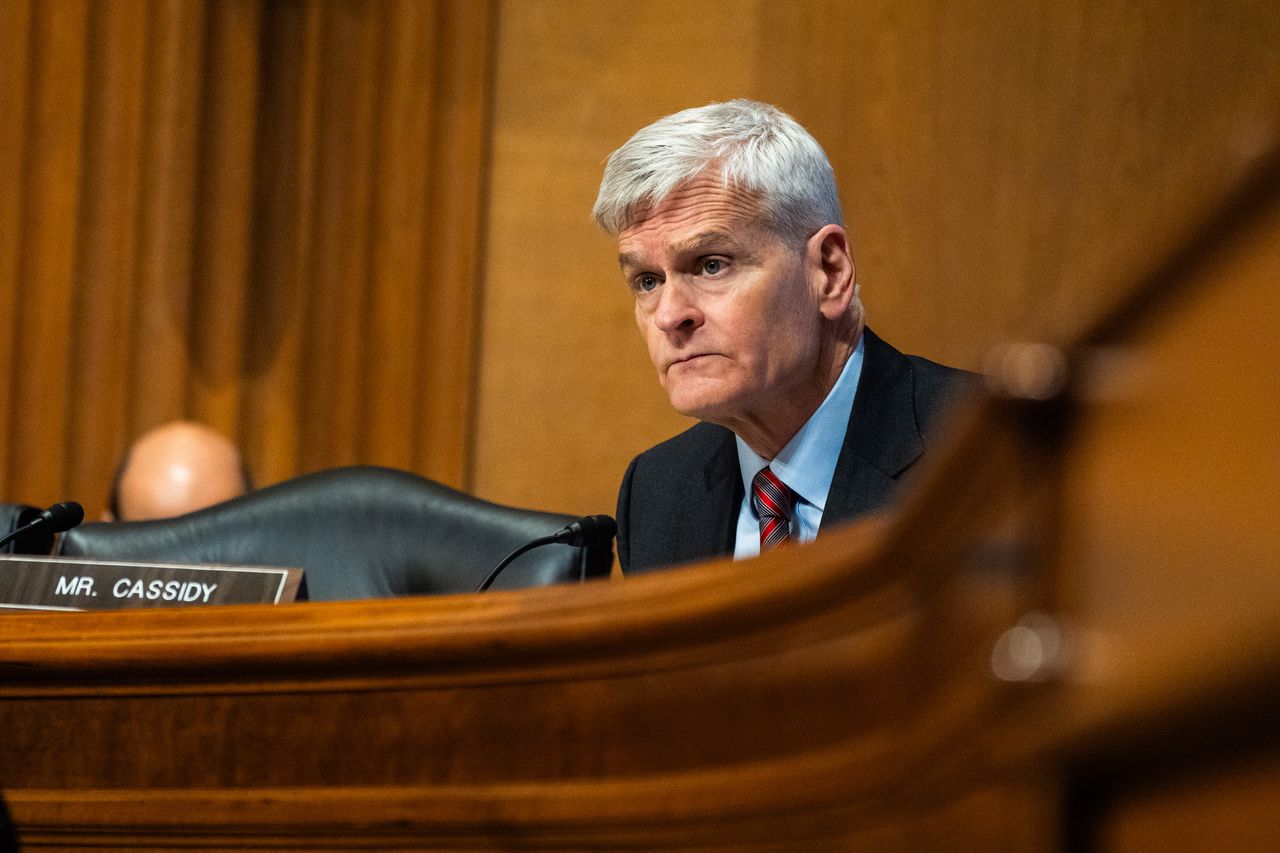| |  | | | | |  | By Megan R. Wilson | - 340B’s billion-dollar question: The Senate health panel will have a hearing next week to dig into the explosive growth of the 340B drug discount program. Critics argue the program, designed to help hospitals and clinics that serve low-income populations, has been misused by some providers.
- Reproductive health fallout: Nearly three dozen federal health workers overseeing Title X funds and teen pregnancy prevention grants have been laid off amid the shutdown.
It’s Thursday, and this is the Health Brief newsletter. I’m your health policy host, Megan Wilson, and we’re unfortunately in the same place we were yesterday in this shutdown mess. The Senate has voted and rejected — for a tenth time — a stopgap government funding measure. Republican leadership (still) wants to reopen the government before discussing the Obamacare subsidies and most Democrats are (still) pushing for the two to happen together. Now the Senate is leaving town for the weekend. Please send any tips, documents or intel to megan.wilson@washpost.com or message me on Signal at megan.434. This newsletter is published by WP Intelligence, The Washington Post’s subscription service for professionals that provides business, policy and thought leaders with actionable insights. WP Intelligence operates independently from the Washington Post newsroom. Learn more about WP Intelligence. |  | | Sen. Bill Cassidy (R-Louisiana) chairs the Committee on Health, Education, Labor and Pensions, which is having a 340B hearing next week. (Demetrius Freeman/The Washington Post) | | | |  | The Lead Brief | The 340B discount drug program will get the spotlight next week, as the Senate Health, Education, Labor and Pensions Committee plans to have a hearing examining the growth of the controversial program that some critics say hasn’t lived up to its promise. The 340B program was designed to enable safety-net providers that treat a large number of low-income people to stretch their limited resources by compelling drugmakers to give them steep discounts on medications. The core tension: Critics argue the program has grown too large, allowing some facilities — including some well-heeled ones — to abuse the price differential to bolster margins or subsidize other operations without necessarily increasing access or lowering costs for patients. → There are also concerns about an increase in the sale of discounted drugs to pharmacies that contract with hospitals, rather than the providers themselves. Legislative hearing: It follows a yearslong probe into the program that Sen. Bill Cassidy (R-Louisiana), who leads the committee, released earlier this year. He’s pushed for reforms, including implementing more transparency measures. Industry impact: Drugmakers, hospitals, health systems and the pharmacies that dispense these drugs are watching closely. There aren’t yet details on who will be appearing before the panel on Thursday for the hearing. Reforming the program is one of the pharmaceutical industry’s top advocacy targets, and its top industry group, PhRMA, is spending seven-figures on advertising in the latter half of the year as part of a push to get lawmakers to act. Hospitals pushed back, arguing the pharmaceutical industry is acting out of greed and that the program helps both providers and patients. Let’s look at some key data points: - Covered entities: There were roughly 5,000 covered entities — health organizations and hospital systems — in the program in 2022, according to a recent report from the Commonwealth Fund. More than 53,000 separate care sites — for example, individual hospital and clinic locations — utilized the program that same year, according to the Congressional Research Service.
- Contract pharmacies: The use of contract pharmacies has also skyrocketed, the Commonwealth Fund report found, from roughly 8,000 in 2012 to nearly 42,000 a decade later.
- Program expansion: Covered entities purchased a record $66.3 billion in outpatient drugs under the 340B program in 2023, according to the most recent federal data available. That’s a 24 percent increase from the previous year.
Federal spending connection: With federal spending under pressure and drug pricing in the spotlight, 340B is rapidly becoming a flash point in the health politics landscape. A Congressional Budget Office report from last month found that the “340B program encourages behaviors … that tend to increase federal spending.” However, for providers working in low-income or rural areas, any erosion in the program could mean fewer resources. | | | |  | Executive Health Brief | The Trump administration’s layoffs have now reached the federal offices that oversee pregnancy prevention and family planning grants, my Washington Post colleague Paige Winfield Cunningham has learned — and the move is raising new questions about how the government will manage those programs heading into next year. Why it matters: Title X funding supports thousands of health clinics around the U.S. and aims to help millions of low-income and uninsured Americans access family planning and reproductive health care, including birth control. Although federal courts have put a temporary pause on the shutdown-driven layoffs, the shake-up could throw next year’s Title X grants into limbo if they go into effect. → The program has been a flash point in the debate over abortion and access. Earlier this year, the Trump administration withheld Title X funds from several Planned Parenthood clinics and other providers. Paige talked to federal workers and got the details: - Roughly 20 staffers in the Office of Population Affairs — which runs grant programs to fund both Title X programs and the Teen Pregnancy Prevention program — were notified they have been terminated.
- Another 14 employees in the Administration for Children and Families, which handles youth sex education initiatives — including the Personal Responsibility Education program (contraception and abstinence) and the Sexual Risk Avoidance Education program (abstinence-only) — were also cut.
When I asked for comment about the layoffs and whether there were concerns about the future of the grant process or programs, HHS spokesperson Andrew Nixon replied: “Programs within the Office of Population Affairs will continue.” | | | |  | Industry Rx | Two academics, Steven Woloshin and Baruch Fischhoff, are arguing in a new Washington Post op-ed that drug companies should capitalize on the Food and Drug Administration’s push for more transparency in direct-to-consumer advertising to make their advertisements more explicit about what a product does. In arguing for tougher ad enforcement last month, FDA Commissioner Marty Makary has said that many pharma ads don’t properly balance a medication’s risks and benefits. “Glossy scenes of patients laughing, singing, and dancing dominate the screen, while fine print races past with warnings about seizures, addiction, or even death,” Makary wrote in a JAMA piece. “That is not fair balance—it is a distraction by design.” But Woloshin and Fischhoff argue that the core problem isn’t the imagery — it’s the absence of context. Most drug ads still fail to convey the most important fact, they argue: how well the drug really works. - Reform idea: A “drug facts box” modeled after nutrition labels, showing information about the benefits (for example, fewer heart attacks) and harms (a list of the side effects) that a person could experience by taking the medicine compared to if they don’t.
“The FDA already has all the information needed to fill drug facts boxes; this is the same evidence that companies provide when they apply for drug approval,” Woloshin and Fischhoff write. - Why it matters: Transparency on efficacy could reshape how patients, prescribers and payers weigh value. The FDA has an opening to set a new baseline for what “fair balance” — the listing of a drug’s risks and benefits — really means.
| | | |  | Jobs Report | Michael Calvo is now a vice president of federal government affairs at drugmaker Bristol Myers Squibb. He comes from BridgeBio, which develops medicines for genetic diseases, but his résumé also includes working for more than eight years at pharma giant GSK. | | | | | | | | | | |